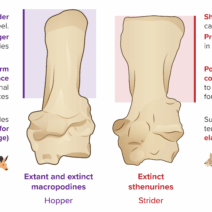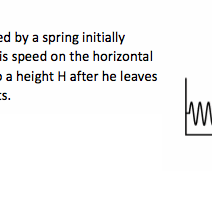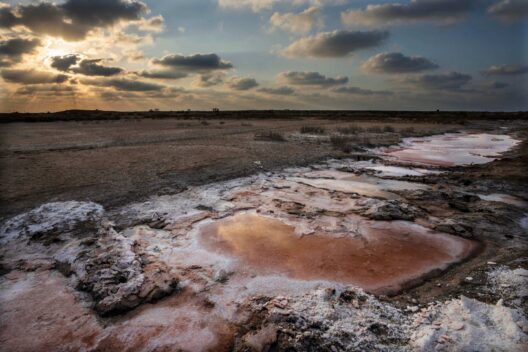Soccer, a sport revered for its simplicity and accessibility, embodies a fascinating confluence of physics and physiology. Each kick and sprint on the field symbolizes a dance of kinetic energy, where players are both artists and athletes, painting a tactical masterpiece with every move. While one may think of soccer as a game driven merely by passion, it is, fundamentally, a striking illustration of energy conservation principles at work. Understanding how energy is conserved on the pitch unravels the underlying science of this global phenomenon.
At the heart of soccer’s energy dynamics is the principle of biomechanics. Consider the soccer ball—an innocuous sphere that becomes the fulcrum of human ingenuity. When a player strikes the ball, potential energy is converted into kinetic energy, transcending an ordinary object into a projectile. The force exerted on the ball, dictated by the player’s muscle power and technique, determines the ball’s velocity and direction. Each shot on goal echoes the principles of physics: energy transfer is at the core of this beautiful game.
Energy conservation is not solely the player’s domain; it extends to the field itself. The dimensions of the soccer pitch, chosen for optimal engagement, play a crucial role in facilitating minimal energy expenditure during gameplay. The expansive green canvas invites athletes to roam freely, but with purpose. Here, distance management becomes paramount. Players adeptly navigate the terrain, competing not just against opponents, but also against the clock, optimizing their movements to maintain stamina. For instance, a player may choose to jog lightly rather than sprint aimlessly—this strategic decision embodies the conservation of energy by fostering endurance in those crucial moments of the match.
Furthermore, team dynamics introduce an intricate ballet of energy conservation through collective synergy. Players operating within a formation illustrate how teamwork amplifies efficiency. Each member has a specific role, and the interplay of their movements generates a rhythmic harmony that reduces individual energy output. For example, when one player runs to engage a defender, they inadvertently create space for a teammate—this relationship fosters an environment where energy is conserved not just physically, but also strategically.
The role of rest periods, both during the match and in training, is another dimension of energy conservation that is often overlooked. In the frenetic pace of soccer, where moments of high exertion are interspersed with brief intervals of recovery, players can harness their energy reserves to sustain performance. Scientific studies have shown that brief rest not only improves physical stamina but also enhances cognitive function. As players replenish oxygen and recover muscle efficiency, the cyclical nature of work and rest illustrates how conservation mechanisms operate at both a micro and macro scale.
The element of technology has also seeped into the world of soccer, creating fascinating opportunities for energy conservation. Wearable technology and performance analytics have revolutionized how players approach the game. Coaches utilize data to monitor energy expenditure, making informed decisions about tactics and substitutions. Such modern tools empower athletes to understand their own bodies better, allowing them to manage their energy more effectively throughout a match. This fusion of traditional prowess and modern technology underscores a commitment to sustainability within the sport, shedding light on the reverse relationship between energy expenditure and performance quality.
Wind resistance and its role in soccer are often taken for granted, yet it is a perfect example of how natural forces impose limitations on energy conservation. Players kicking the ball at high velocities must contend with air resistance—the invisible adversary that siphons off energy intended for movement. Therefore, the shape of the ball, its material, and the kick technique become critical in optimizing performance. A well-executed kick minimizes energy loss, facilitating a greater distance traveled by the ball with less effort applied. This phenomenon not only highlights the physics at play but reinforces the necessity for players to master their craft to approach the zenith of energy efficiency.
Soccer also exemplifies energy conservation in the way athletes hydrate and nourish their bodies. The connection between nutrition and energy management is profound; a well-balanced diet acts as fuel for sustained performance. Carbohydrates serve as an immediate energy source, while proteins help repair muscle. The timing of nourishment is crucial, echoing the understanding that energy must be preserved and strategically deployed during both practice and games. This holistic approach to athlete management demonstrates that energy conservation spans beyond the pitch and into every aspect of a player’s regimen.
As soccer continues to evolve, so too does its commitment to preserving energy and fostering sustainability. The global soccer community increasingly recognizes its role in advocating awareness about climate change and promoting eco-friendly practices within the sport. From utilizing renewable energy sources in stadiums to embracing sustainable materials for equipment, the symbiosis of sport and environmental stewardship showcases an admirable paradigm shift. The beautiful game, at its core, is now marrying sportsmanship with environmentalism, captivating fans while promoting a greener future.
In summary, energy conservation in soccer is an intricate interplay of physics, physiology, and strategy. From biomechanical efficiencies in kicking to the teamwork that minimizes individual exertion, soccer serves as a brilliant metaphor for broader ecological principles. The convergence of technology, nutrition, and environmental consciousness within the sport illustrates a multifaceted approach to sustainability. As athletes kick and sprint across pitches worldwide, they embody a larger narrative about our relationship with energy and the imperative to steward our resources wisely. With every match played, soccer is not just a game; it is a vital chapter in the ongoing story of our commitment to a sustainable future.








